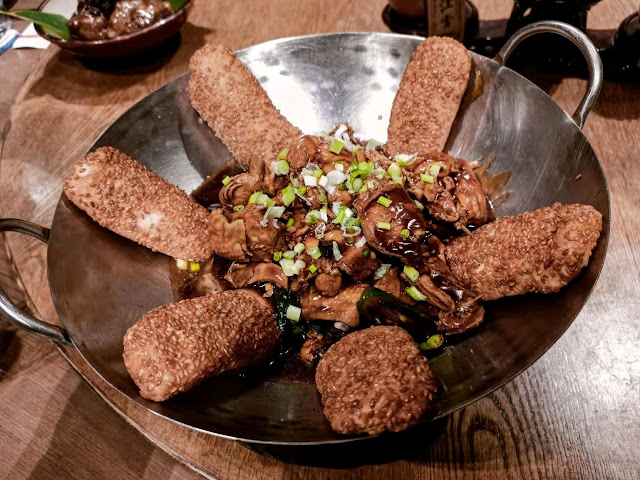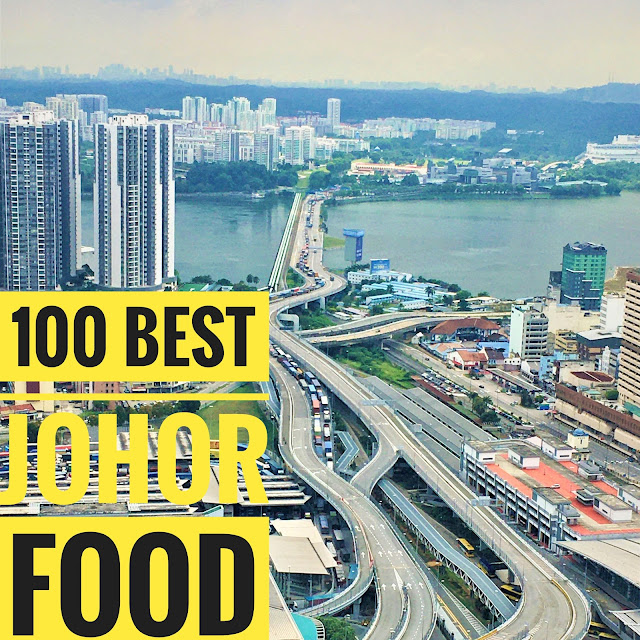I have very fond memories of my visits to China's Jiangsu province, so I was excited to be invited to attend the Jiangsu Grand Canal Culture and Tourism Promotion Conference. The event hosted by Jiangsu Provincial Department of Culture of China was organised by Jiangsu Tourism (Singapore & Malaysia) Promotion Centre on 8 Sep 2022 at the Jiangnan-themed Nanjing Impressions restaurant at Plaza Singapura, Orchard Road. (Visiting Nanjing Impressions' Nanjing headquarters was one of my best memories of Jiangsu province.)
Guests in attendance included Xiao Jianghua (Director of China Cultural Centre & China National Tourist Office in Singapore), Zhou Zheng (Vice Director of China National Tourist Office in Singapore), Shen Liguo (Director Representative of Jiangsu Provincial Economic & Trade Office in Singapore), Hu Yongli (Trade Representative of Jiangsu Provincial Economic & Trade Office in Singapore), and Chew Chang Guan (Chief Executive Officer of Sarawak Trade & Tourism Office Singapore, travel agents and media.
 |
| City of Suzhou |
Guests enjoyed the presentations of scenery of Jiangsu Grand Canal while savouring the local dishes of the canal cities. We were impressed by both the beautiful landscape and the food.
The Grand Canal, a UNESCO World Heritage Site, is the longest canal or artificial river in the world. The oldest parts of the canal date back to the 5th century BC, while most of today's Grand Canal was restored and built between 1271 and 1633. It runs for 1,776 km from Beijing to the city of Hangzhou, linking the Yellow River and Yangtze River thus playing a key role in unifying north and south China. The Grand Canal is the ancient equivalent of today's super highways and high speed railways.
The Grand Canal section of Jiangsu is the earliest section of the canal, with the most waterways, the widest geographical coverage, the longest sailing distance and the richest culture. In addition, Jiangsu is also the place of origin of the Grand Canal and has the largest number of heritage sites.
The Conference to further promote culture and tourism along the Jiangsu section of the Grand Canal was divided into 4 main sections.
After an introduction to China's Grand Canal, the host in Hanfu dress introduced the eight canal cities of Jiangsu from north to south, which are Xuzhou, Suqian, Huai'an, Yangzhou, Zhenjiang, Changzhou, Wuxi and Suzhou. It allowed guests and travel agents to learn more about the beautiful scenery, rich historical heritage and culture of the eight cities in Jiangsu that the Grand Canal flows through, and to deepen our impression of each city through authentic cuisine.
Let's tour the Eight Canal Cities of Jiangsu through their cuisine.
This is the classic, iconic Huaiyang dish 狮子头 stewed lion head which is actually a large pork ball and soup. Huaiyang cuisine and chefs are renown for their knife skills. In this dish, the chef used a knife to painstakingly cut the fat and lean meat finely rather than just put the meat through a grinder which would simply churn the meat and fat into mash. By going the extra mile, we can taste and feel the exquisite texture of the meat and fat as we savour the deliciously savoury sweet meat ball.
地锅鸡 Ground Wok Chicken is a famous dish from Xuzhou cuisine. According to legend, fishermen in 微山湖 Weishan Lake used to cook on their boats with a mud stove using wood to make fire. One of the dishes was stewed chicken. The fishermen would stick flatbread around the rim of the wok. It turned out that the bread infused the flavours of vegetables and meat while the bread imparted its aroma to the dish. This delicious ground wok chicken is a signature dish of Xuzhou city.
无锡酱糖醋排骨 Wuxi style sweet and sour pork ribs. Wuxi Sauce Pork Ribs are cooked and stir fried with soy sauce, rock sugar, rice wine and other seasonings for a long time, requiring great attention to the heat and cooking skills. The succulent ribs, red in colour is crisp yet tender and tastes savoury, sour and sweet. So delicious. We are unable to fly to Wuxi now to eat these famous pork ribs with sauce, but at least we have it at the conference to satisfy our cravings!
云斗煮干丝 is a famous Huaiyang dish and signature of Nanjing Impressions restaurant. This is another dish demonstrating the emphasis on knife skills in Jiangsu cuisine. 干丝 means dry silk referring to thin strands which look like noodles hand cut from dried tofu slices. When you eat the dried tofu strands served in a rich savoury pork soup, you will appreciate the chef's expert knife skill.
阳春面 Yangchun noodle is a humble affordable staple dish commonly found in Jiangsu Province and Shanghai. It's a simple dish of slurpy noodles in a savoury soup of chicken and pork stock with soy sauce and seasoning garnished with chopped scallion.
The name Yangchun came from Xiaoyangchun which means October in the lunar calendar and Yangchun means ten. When these noodles first appeared in the marketplace, it was sold at ten cents a bowl, hence it became known as Yangchun noodle.
After all the delicious Jiangsu dishes, we washed it down with 气泡碧螺春 bubble biluochun! Biluochun is a famous tea from Suzhou - one of the top ten famous teas of China and the number one tea in Jiangsu. We have all drunk cold brewed tea, but today's floral tasting bubble Biluochun is different with a refreshing fizzy zest!
I have an article on Jiangsu cuisine 👈 click
 |
| China Easterns flies direct from Singapore to Nanjing. Image courtesy of Wikipedia |
.jpeg) |
| Juneyao Airlines flight direct from Singapore to Wuxi. Image courtesy of Wikipedia |
I last visited Jiangsu province in 2018 - that's a long time ago! After this fascinating conference, I am looking forward to a re-visit as soon as possible.









.jpg)





This comment has been removed by a blog administrator.
ReplyDelete